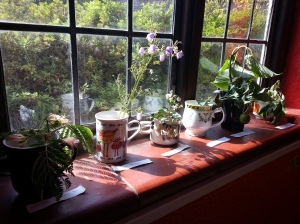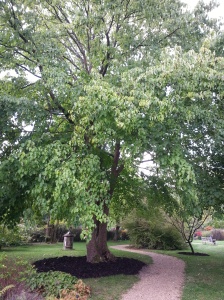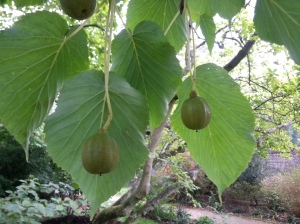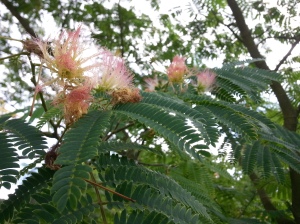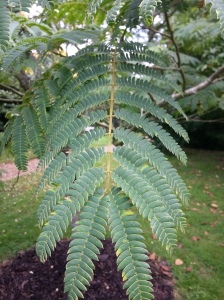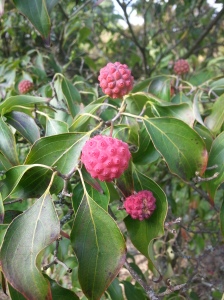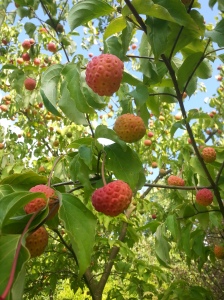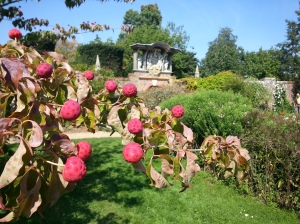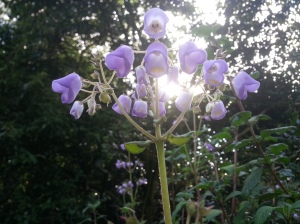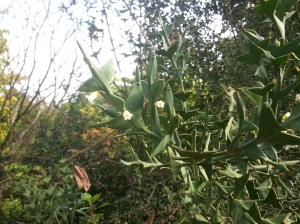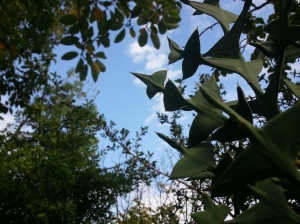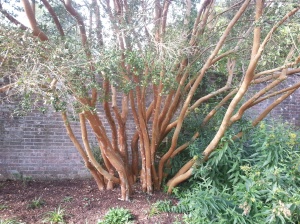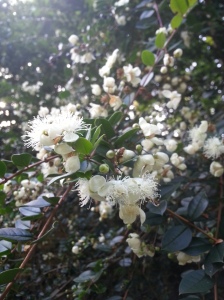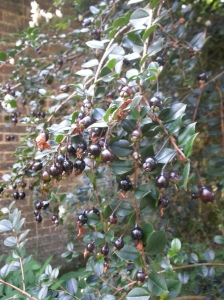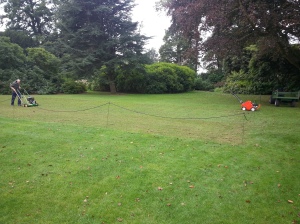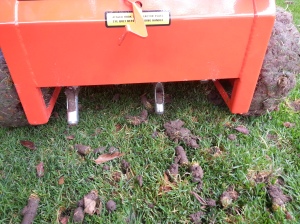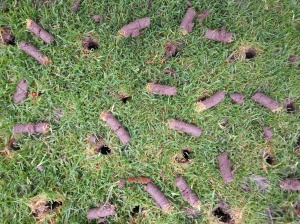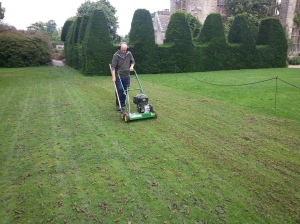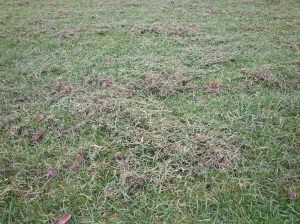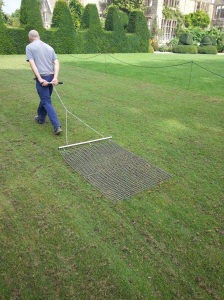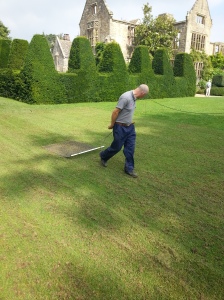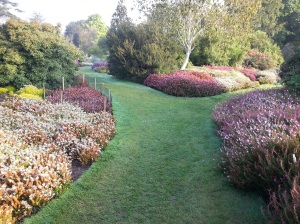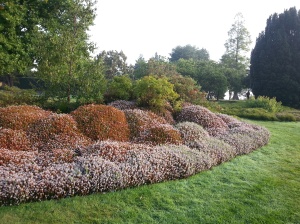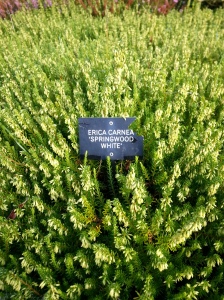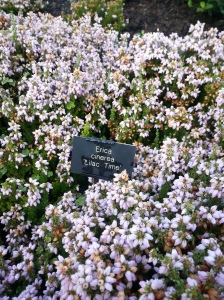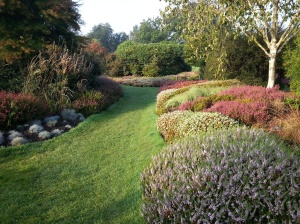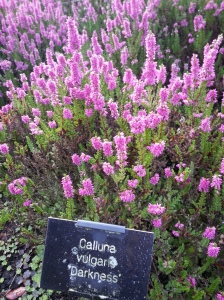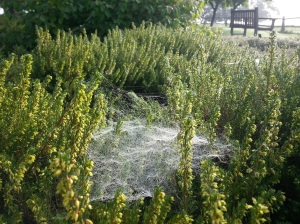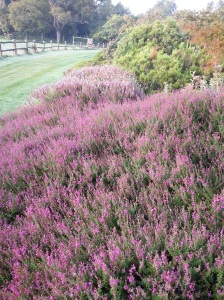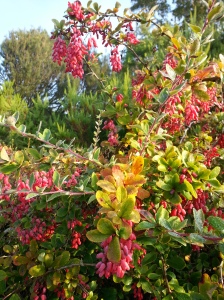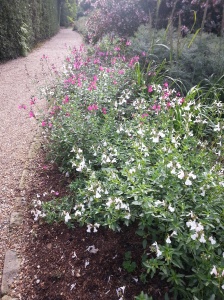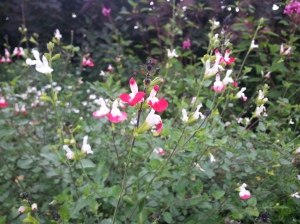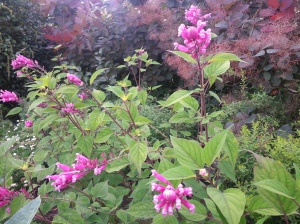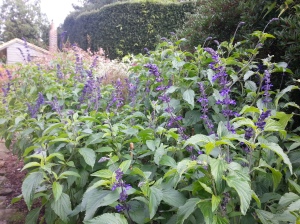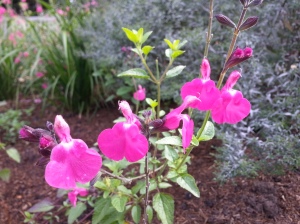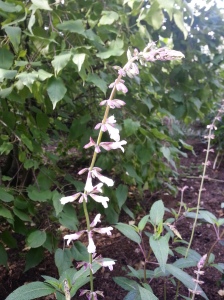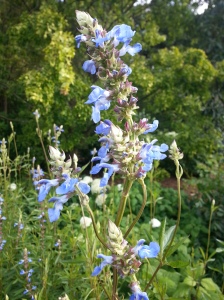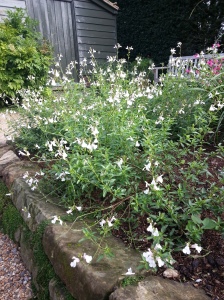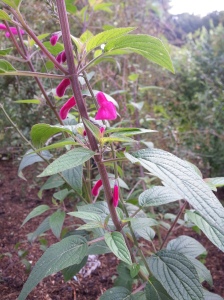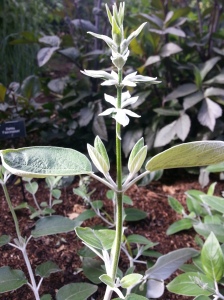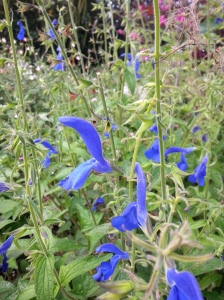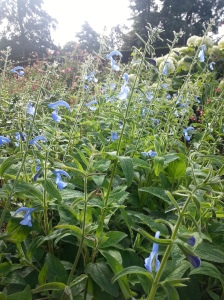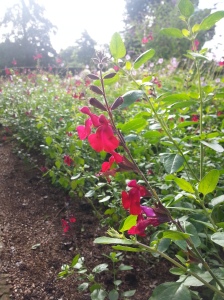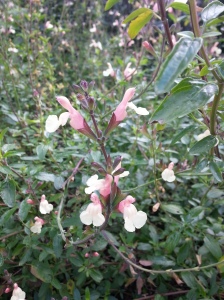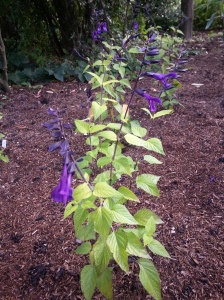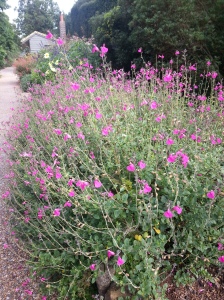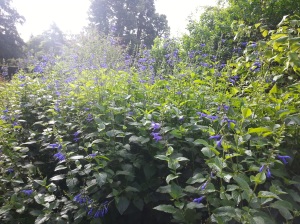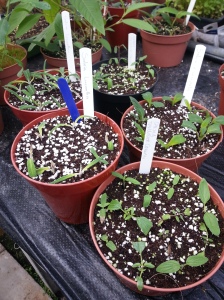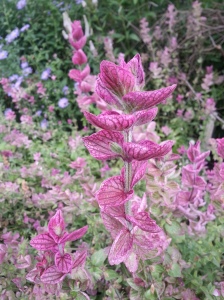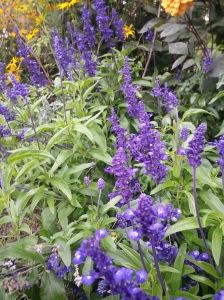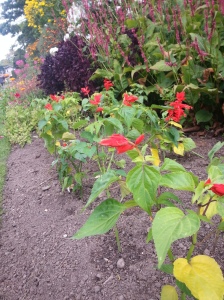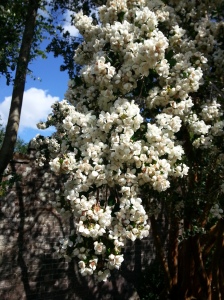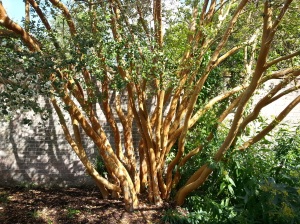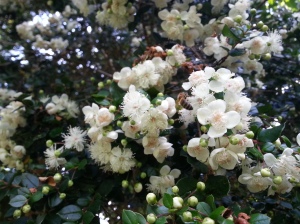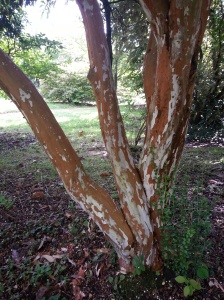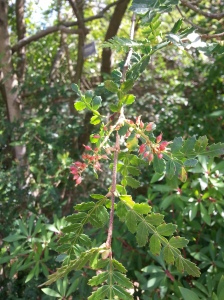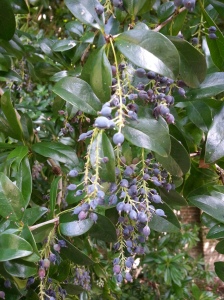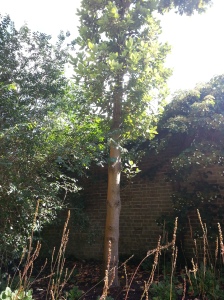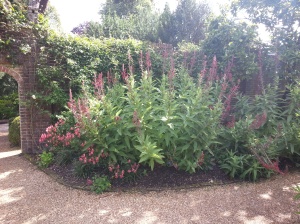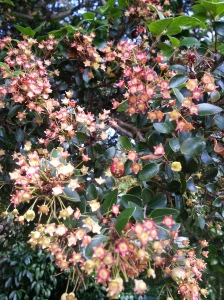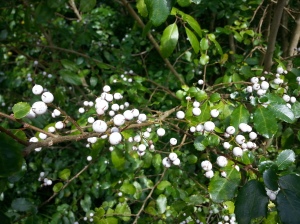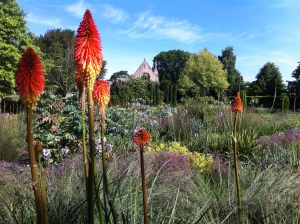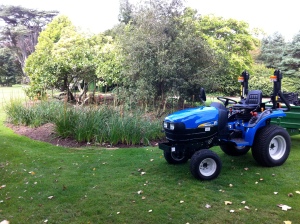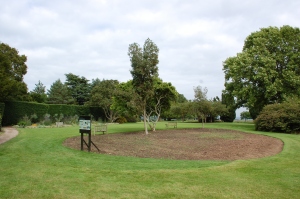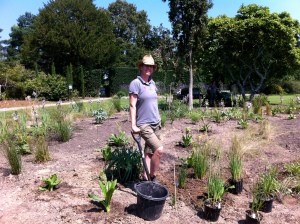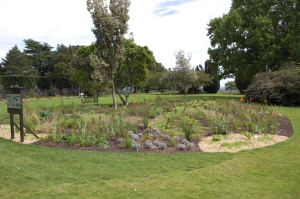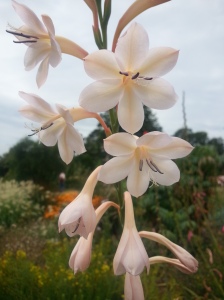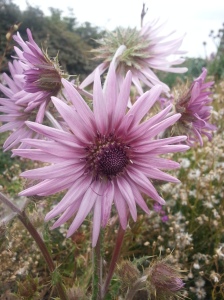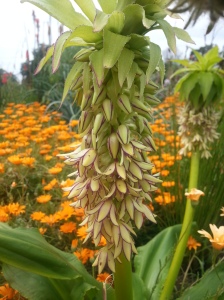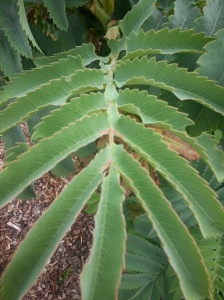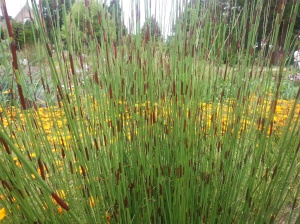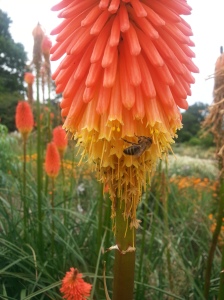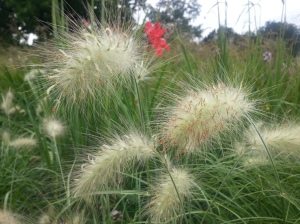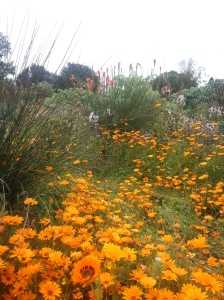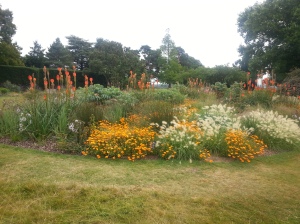As well as being a Grade II listed garden with a fantastic history behind it, Nymans is also rated by Roy Lancaster as having a plant collection that is in the top five of gardens open to the public in England. We are therefore rightly very proud of that huge collection of very rare plants and because of that we try and make sure our staff and volunteers have as much knowledge of those plants as possible so that we can pass that information on to our visitors. With this in mind, each week a senior member of the garden team chooses a selection of plants that the rest of them team must try and identify and then learn a little bit more about. As you can see from the above picture, cuttings from each plant are placed in water on the window sill of the garden mess room for each set of ‘contestants’ to have a go at! In this week’s blog we thought we’d show you the plant choices from last week so that you can join in for yourselves at home. All of the plants in this ‘plant ident’ can be found in the Walled Garden so you won’t have to walk far to see all of them quite quickly if you pay us a visit…
Also known as the Handkerchief Tree, Dove Tree or Ghost Tree, Davidia involucrata was once considered to be the Holy Grail of exotic flora. Scottish plant hunter Augustine Henry first found a single tree in China, sending a preserved example back to Kew, but when another great plant hunter, Ernest Henry Wilson, was dispatched by the Veitch nursery in 1899 to bring back specimens, he found that it had been felled for building purposes! He later found a grove of the trees overhanging a sheer drop but still managed to collect some material. In 1901 his ship was wrecked on the journey home but Wilson managed heroically to save the Davidia specimens!
This tree is obviously usually know for the large white floral bracts in late Spring but at the moment lots of our visitors are interested in the hanging fruit too. Each fruit contains 6–10 seeds, which germinate erratically, while the trees themselves may need 10–20 years to flower. Native to south central and south west China, Davidia is named after Father Armand David, a French missionary and keen naturalist who lived in that region. The species name involucrata means ‘ring of bracts’.
Also known as the Persian Silk Tree, this blink-and-you’ll-miss-it beauty is currently flowering well in the Walled Garden, something it doesn’t necessarily do every year. Native to southwest and eastern Asia, it has been awarded the RHS Award of Garden Merit (AGM). The Genus was named after Italian nobleman Filippo Albizzi, who introduced the tree to Europe in the mid 18th century. The species name julibrissin is a corruption of the Persian word for ‘silk flower’.
Another name for this plant is the Sleeping Tree. This is because the leaves slowly close up when it is dark or sometimes during heavy rain storms. This is obviously in response to light levels, the flowers also being more prolific at the top of the tree. This ‘Rosea’ cultivar is much more frost hardy then the generic form of the tree and therefore much better suited to the climate down here in Sussex.
Native to Korea, Japan, China and Taiwan, Cornus kousa is more commonly known as Chinese Dogwood. Some dogwoods are grown for their brightly coloured stems in Winter but these larger types bloom profusely in late Spring and through the Summer with large showy bracts surrounding the inconspicuous flowers. As we head into Autumn however, it is their fruit which is catching all the attention. These compound berries are actually quite sweet to taste if you can remove the flesh from the rough skin and are sometimes even used to make wine. There are plenty of other forms of Cornus here at Nymans. In fact in the Walled Garden alone you will also find the following:
Flowering Cornus trees had many uses for early European settlers in the United States. The wood is shock-resistant, is able to withstand abrasion, and wears smoothly under friction. This wood was therefore used for the likes of barrel hoops, bobbins, farm implements, golf club heads, hayforks, knitting needles, mallet heads, pulleys, rake teeth, rolling pins, sledge runners, splitting wedges, tool handles, weaving shuttles, wheel cogs, and wheel hubs! The powdered bark was used as toothpaste, while both the inner bark and the root bark were used as an antiseptic. The outer bark contains cornine, betalic acid, gallic acid, tannic acid, verberalin, and verbenalosida, and so many physicians made medicines it. They were listed in the U.S. Pharmacopoeia from 1820 to 1894 and in the National Formulary from 1916 to 1936.
Also known as the Slipper flower or the Teacup Flower, this unusual rarity from Chile hides away at the far end of the Walled Garden here at Nymans but it really is worth seeking out. It was brought back from Edinburgh Botanical Gardens by our head propagator Charlene a few years ago and she plans to take cuttings to make lots of new plants this Autumn. This herbaceous perennial is in the Calceolaria family but the leaves when crushed produce a very strong spicy mint fragrance. This South American stunner is similar to the slightly more common Jovellana punctata, although that particular plant has white flowers instead of pink.
This rare South American oddity is one of the spikiest, spiniest plants you are ever likely to see and you certainly wouldn’t want to fall into a thicket of it! The large flat section are actually modified stems with the leaves themselves being very small and insignificant and only forming on new growth. The white flowers begin to arrive in early Autumn, and while also small, are heavily scented of vanilla, but just go careful of the spines if you try and give them a sniff!
As you can see from the picture above, the very apt common name of Colletia cruciata is the Jetplane Plant! Other names include the Anchor Plant or the Crucifixion Thorn. With the flattened stems being able to catch more sunlight and the thorns stopping predators from eating the plant, Colletia cruciata has adapted very well to survive in a variety of conditions. While it is accustomed to arid climates, it can tolerate regular rainfall if grown in fast-draining soil such as that here at Nymans.
The final plant choice from last week should need no introduction to regular readers of this blog. The Chilean Myrtle was featured heavily in a post we produced back in mid August but if you missed it you can play catch up by clicking here. To summarise it quickly for you here, Luma apiculata, previously known as Myrtus apiculata, is native to the central Andes between Chile and Argentina and is covered in fragrant white flowers in Summer, which are very popular with bees, and then deep purple berries in Autumn. Our largest Chilean Myrtle, the stunning stems of which you can see above, was brought back from South America by celebrated plant hunter Harold Comber who also happened to be the son of James Comber, the first Head Gardener at Nymans!
So the next time you come and see us here at Nymans, make sure you explore the Walled Garden fully on your way around the gardens and see how many of these six plants you can spot. Watch out though, if one of the gardeners see you they might just test you on them! Of course, there is plenty more to see and do here at all times of the year so to make sure you keep up to date with all that is going on at Nymans, don’t forget you can interact with us on both Twitter and Facebook as well as finding out all the important visitor information via our official website. If you want to be alerted by email when each new Nymans Garden Blog is published, simple click the ‘Follow’ button at the top of this page and carry out the instructions.

